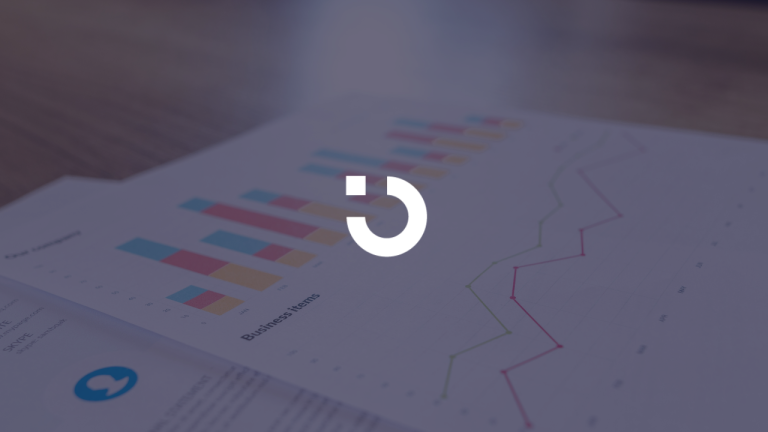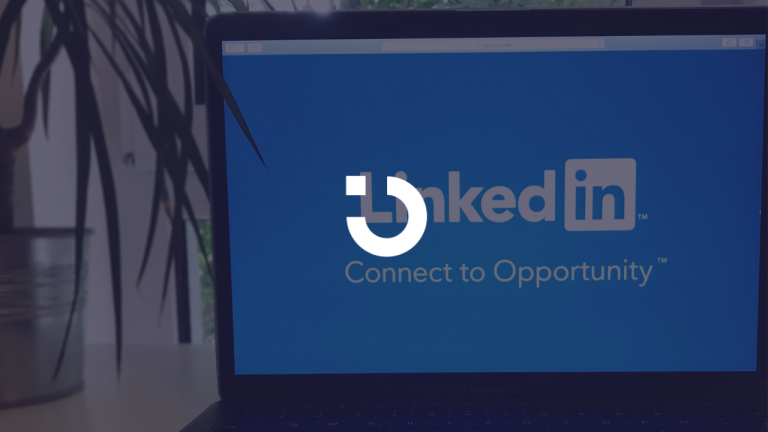If you ask most outbound teams what success looks like, you’ll hear the same answers:
“More emails sent.”
“Higher open rates.”
“More meetings booked.”
But here’s the truth – most of those are vanity metrics.
They make your dashboard look good, but they don’t necessarily move your pipeline forward.
In 2025, outbound sales is all about efficiency, precision, and data-driven execution. The best teams aren’t chasing activity; they’re measuring impact.
And that impact shows up in a few key places: conversations started, opportunities created, and revenue generated.
The problem? There’s a sea of metrics out there, and it’s easy to lose focus on the ones that actually matter.
Are you tracking the right indicators of outbound success or just the loudest ones?
In this post, we’ll break down the 7 outbound metrics that truly matter. The ones that tell you whether your outbound engine is working, scalable, and aligned with real business outcomes.
Each metric we’ll cover ties directly to pipeline health, conversion quality, and outbound ROI. Not just inbox noise.
So if you’re ready to turn your outbound reporting from “busy” to predictable and profitable, let’s dive in.
1. Conversation / Connect Rate: The First Real Signal of Outbound Success
Let’s start with the most underrated outbound metric – the Conversation Rate (sometimes called Connect Rate).
This is the percentage of your outreach that actually leads to a real human conversation, whether that’s someone replying to an email, accepting a call, or responding to a LinkedIn message.
It’s the first true sign that your outbound message isn’t just being delivered, but it’s landing.
Why It Matters
Anyone can send 500 messages a week.
But if only a handful turn into genuine replies or discussions, your pipeline will never scale, no matter how good your templates look.
A healthy conversation rate tells you three things:
- You’re reaching the right people.
- Your message is resonating.
- Your outreach volume is actually converting into engagement — not just activity.
According to Revenue.io’s 2025 Sales KPI Guide, “Conversations per day” and “Connect rate” are two of the most critical early-stage outbound metrics that correlate strongly with meeting rates and pipeline creation.
What’s a Good Benchmark?
Benchmarks vary by channel, but here’s what top outbound teams typically see:
- Cold email connect rate: 5–10% reply rate (positive + neutral)
- Cold call connect rate: 8–12% connected conversations
- LinkedIn outreach: 15–25% response rate for warm, contextual messages
If your numbers are lower, it’s not always a volume problem. It’s usually a targeting or messaging problem.
How to Improve Your Conversation Rate
- Refine your ICP: Make sure your contact list is hyper-relevant to your offer.
- Personalize intelligently: Use 1–2 genuine personalization hooks, not filler.
- Test tone and timing: Try more conversational openers and vary sending windows.
- Mix your channels: Combine LinkedIn touches with email and phone for context.
2. Meeting / Qualified Meeting Rate: Turning Conversations Into Real Opportunities
Once you’re getting replies and conversations going, the next metric that actually matters is your Meeting Rate, or, more specifically, your Qualified Meeting Rate.
This measures how many of your outbound conversations result in a booked, meaningful meeting. One that fits your ICP and has genuine potential to advance the deal.
Why It Matters
Let’s be honest, not all meetings are created equal.
You can fill your calendar with “curiosity calls,” but if none of them lead to qualified pipeline, your outbound machine is just spinning its wheels.
The Qualified Meeting Rate is your first checkpoint that your outreach isn’t just engaging. It’s attracting the right people.
According to Callbox’s B2B Outbound KPIs Guide, tracking both Meeting Booking Rate and Qualified Meeting Rate gives a clear picture of outbound efficiency. Showing whether your messaging and targeting are aligned with true buyer intent.
What’s a Good Benchmark?
Typical benchmarks depend on your market and offer, but here’s what top-performing teams see:
- Outbound email to meeting: 2–4%
- Cold calls: 3–6%
- LinkedIn outreach: 5–8%
For qualified meetings, a solid benchmark is around 60–70% of total booked calls.
That means 6–7 out of every 10 meetings are with someone who fits your ICP and has real potential to buy.
How to Improve This Metric
- Pre-qualify before scheduling. Use simple filters like company size, role, and tech stack to ensure quality conversations.
- Audit your message-to-meeting flow. Does your outreach copy clearly state the value of taking a call?
- Refine your CTA. Instead of “Would you be open to a quick chat?”, test specific, value-based CTAs like “Would it make sense to compare how you’re doing [X] today vs. how other [ICP] teams are streamlining it?”
- Align SDR and AE definitions. Make sure both teams agree on what “qualified” means, and document it.
3. Lead-to-Opportunity Conversion Rate: Measuring the Real Impact of Outreach
Getting meetings is great.
But meetings that don’t turn into pipeline are just calendar clutter.
That’s where the Lead-to-Opportunity Conversion Rate comes in. It tells you how well your outbound motion turns early interest into real, qualified sales opportunities.
Why It Matters
This is one of the most important and misunderstood outbound metrics.
Most teams stop tracking after a meeting is booked. But if that meeting doesn’t convert into a qualified opportunity, the earlier metrics (reply rate, meeting rate, etc.) don’t mean much.
Your Lead-to-Opportunity Conversion Rate measures how effectively your SDRs (or outbound team) are setting up sales-qualified leads. The ones your AEs actually want to pursue.
As Punch! B2B explains, this metric connects the dots between top-of-funnel activity and bottom-line impact.
What’s a Good Benchmark?
This varies by industry and deal size, but for most B2B outbound programs, you’ll want to aim for:
- 20–35% of meetings turning into qualified opportunities
- 40%+ for highly targeted ABM-style outbound
If you’re converting fewer than 1 in 5 meetings into opportunities, you might have a positioning gap. Your offer or outreach might be resonating enough to book time, but not enough to progress the deal.
How to Improve This Metric
- Tighten qualification criteria. SDRs should know exactly what makes a meeting worth passing to sales.
- Review AE feedback loops. Use post-meeting notes to understand why meetings didn’t progress: messaging misalignment? Wrong persona?
- Adjust your pitch narrative. The first call should bridge curiosity → business pain → relevant solution.
- Track by persona and industry. You’ll often find certain segments convert 2–3× better than others – double down there.
4. Pipeline Value / Projected Pipeline: Measuring the Weight of Your Outbound Engine
At the end of the day, outbound isn’t about how many meetings you book. It’s about how much pipeline value those meetings create.
The Pipeline Value (or Projected Pipeline) metric measures the total monetary value of opportunities generated through outbound. In other words:
Why It Matters
This is the clearest way to measure outbound ROI.
High reply rates and booked meetings look good in a report. But they mean nothing if the deals are too small or unqualified.
Tracking pipeline value helps you:
- Forecast future revenue more accurately.
- Identify your highest-value channels (email vs. LinkedIn vs. calls).
- Understand where your best opportunities are actually coming from.
According to Plecto’s Outbound Sales KPI Report, “Projected Pipeline Sales Value” is one of the strongest predictors of overall sales performance — because it connects outbound activity directly to revenue potential.
What’s a Good Benchmark?
For healthy outbound programs, the general rule of thumb is:
- Every $1 spent on outbound should generate $4–6 in pipeline value.
- Outbound pipeline contribution should account for 30–50% of total new pipeline in a B2B company.
That said, it’s not just about size. It’s about quality. Ten $10K deals are not the same as two $100K deals with shorter sales cycles.
How to Improve This Metric
- Target higher-value ICPs. Don’t chase volume. Focus on accounts with bigger deal potential.
- Prioritize messaging around ROI. Higher-ticket buyers respond to impact, not features.
- Use deal scoring. Weight opportunities by likelihood to close, so you forecast smarter.
- Track by source and rep. Identify which outbound channels or SDRs generate the most revenue-weighted pipeline.
5. Win Rate / Close Rate (Outbound-Sourced): Turning Opportunities Into Revenue
You’ve generated pipeline. Great. But pipeline only matters when it closes.
The Win Rate (or Close Rate) measures the percentage of outbound-sourced opportunities that actually convert into closed-won deals.
Why It Matters
This metric is the ultimate reality check for your outbound program.
You can have high conversation rates, booked meetings, and massive pipeline value — but if deals aren’t closing, your outbound engine isn’t delivering real business impact.
A strong Win Rate shows that:
- Your outbound targeting is hitting the right buyers.
- Your messaging is attracting genuinely qualified opportunities.
- Your sales process is effective in converting interest into revenue.
As Cognism notes, tracking outbound-sourced deals separately from inbound or referral deals gives teams a clear understanding of their true outbound effectiveness.
What’s a Good Benchmark?
Typical outbound-sourced Win Rates vary by market and deal size:
- SaaS / Mid-market B2B: 20–30%
- Enterprise B2B: 10–20%
Lower than that? It usually signals misalignment between your outbound targeting and sales qualification criteria.
How to Improve This Metric
- Align SDRs and AEs. Ensure both teams agree on what constitutes a qualified opportunity.
- Audit lost deals. Identify patterns. Is it ICP misfit, poor messaging, or competitive factors?
- Refine offer messaging. Make the value of your solution clear, early in conversations.
- Focus on high-value accounts. Less volume, more strategic targeting often drives better win rates.
6. Cost Per Customer Acquired (Outbound-Only CAC): Measuring Efficiency
Generating meetings, pipeline, and closed deals is great. But what does it cost to get a customer from outbound?
The Cost Per Customer Acquired (CAC) for outbound measures the total spend: SDR salaries, tools, lists, outreach resources, divided by the number of customers acquired through outbound efforts.
Why It Matters
Outbound can be expensive. Without tracking CAC, you won’t know if your pipeline is sustainable.
High outbound activity can feel productive, but if the CAC is too high, you’re burning budget faster than deals are closing. Conversely, a healthy CAC indicates that your outbound engine is efficient, scalable, and delivering ROI.
According to PersistIQ, tracking CAC in the context of outbound is critical to understand your true cost of growth.
What’s a Good Benchmark?
- SaaS / Mid-market B2B: $1 spent generating $4–6 pipeline value is typical.
- Enterprise B2B: CAC varies widely; focus on CAC relative to deal size and contract value.
The key is not just minimizing cost. It’s balancing cost with quality of opportunities and Win Rate.
How to Improve This Metric
- Refine ICP targeting. Reaching the wrong companies wastes time and budget.
- Optimize tools and processes. Use automation for research and follow-ups, not spam.
- Track by channel and SDR. Identify high-performing segments and repeat success.
- Analyze drop-off points. If many leads fail early in the funnel, you’re over-investing in low-value targets.
7. Time to First Contact / Lead Response Time: Speed Wins in Outbound
Here’s a simple truth: the faster you respond, the better your chances of conversion.
The Time to First Contact (or Lead Response Time) measures how quickly your team engages a new lead after identifying them. It’s not flashy, but it’s one of the most critical metrics in outbound.
Why It Matters
Buyers move fast. Studies consistently show that the odds of a successful conversation drop dramatically after the first few hours of a lead entering your pipeline.
A long delay signals disorganization and lost opportunities, while a fast response shows professionalism, relevance, and attentiveness.
According to Callbox’s B2B KPI guide, monitoring lead response times ensures that your outreach is timely and maximizes the likelihood of engagement.
What’s a Good Benchmark?
- Top-performing teams aim for under 30 minutes for inbound leads or highly targeted outbound signals.
- For standard outbound sequences, initial outreach within 24 hours of lead identification is considered best practice.
How to Improve This Metric
- Automate alerts for new leads. Ensure SDRs are notified instantly when a lead enters the system.
- Prioritize high-value prospects. Not all leads are equal. Engage the most promising first.
- Streamline handoffs. Reduce delays between SDR research and outreach execution.
- Monitor SLAs. Set clear expectations for response times and track compliance.
Conclusion: Focus on Metrics That Drive Revenue, Not Vanity
Outbound sales is full of noise. Netrics that look impressive but don’t move the business forward.
Tracking the right indicators: conversation rate, qualified meetings, pipeline value, win rate, CAC, and lead response time, gives you real insight into how your outbound engine is performing.
These 7 metrics tell the story from first touch to closed deal, helping you:
- Identify bottlenecks in your outreach
- Optimize messaging and targeting
- Make data-driven decisions for your SDR and AE teams
- Ensure your outbound program contributes measurable revenue
Ready to Make Your Outbound Metrics Work for You?
Stop guessing which activities matter. Start measuring what actually drives results.
👉 Contact us today to audit your outbound KPIs, set up a performance-driven dashboard, and turn your outreach into a predictable growth engine.




